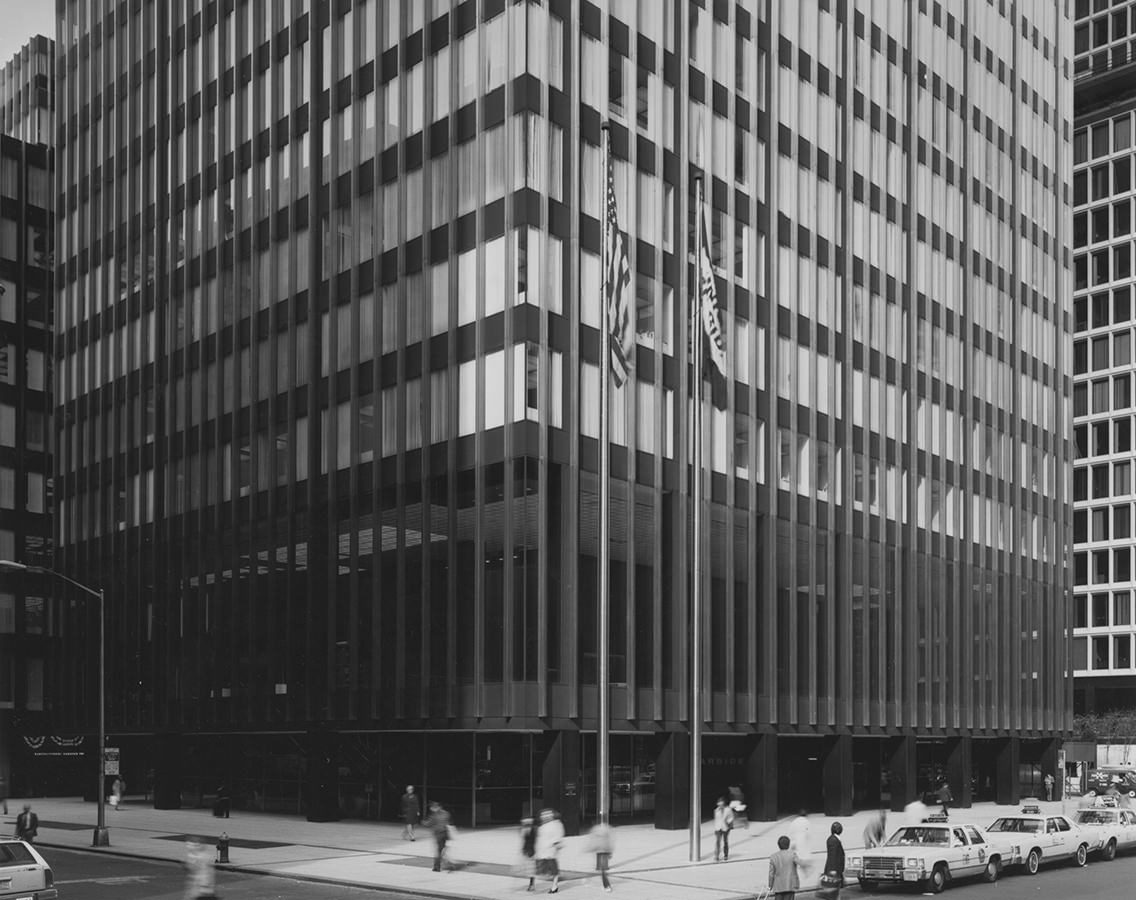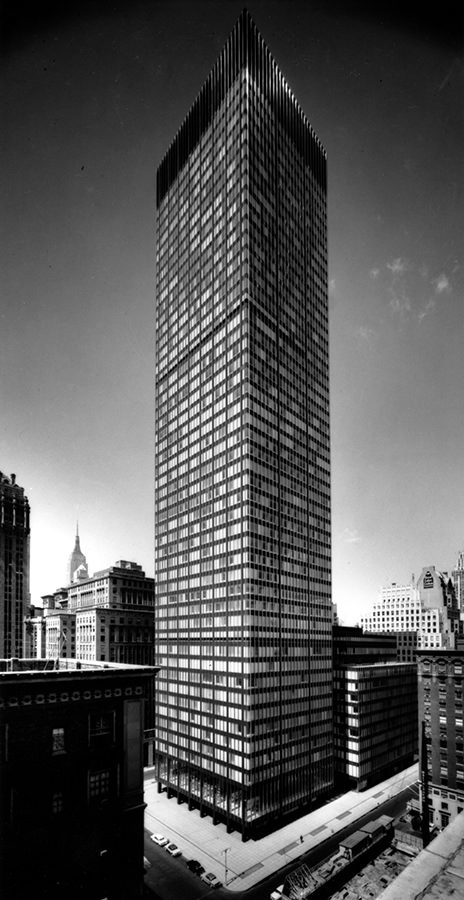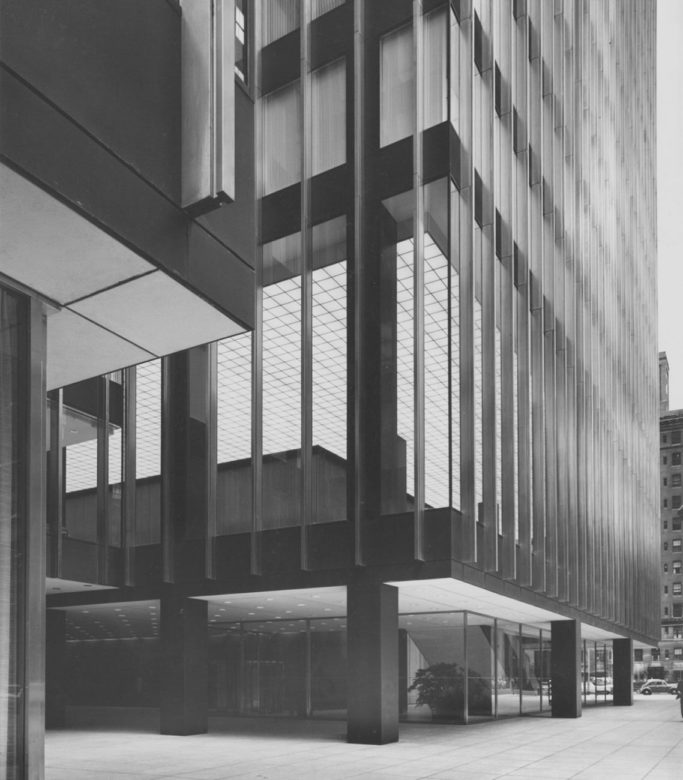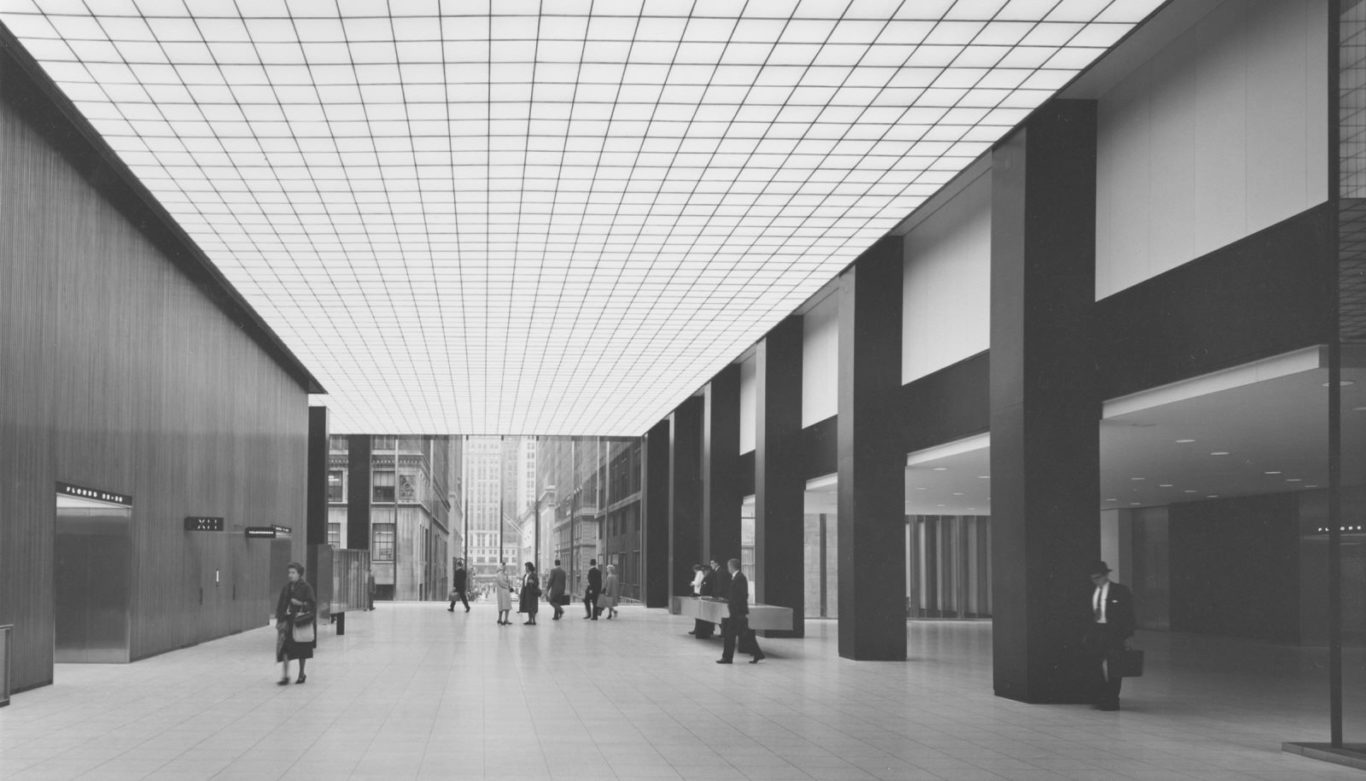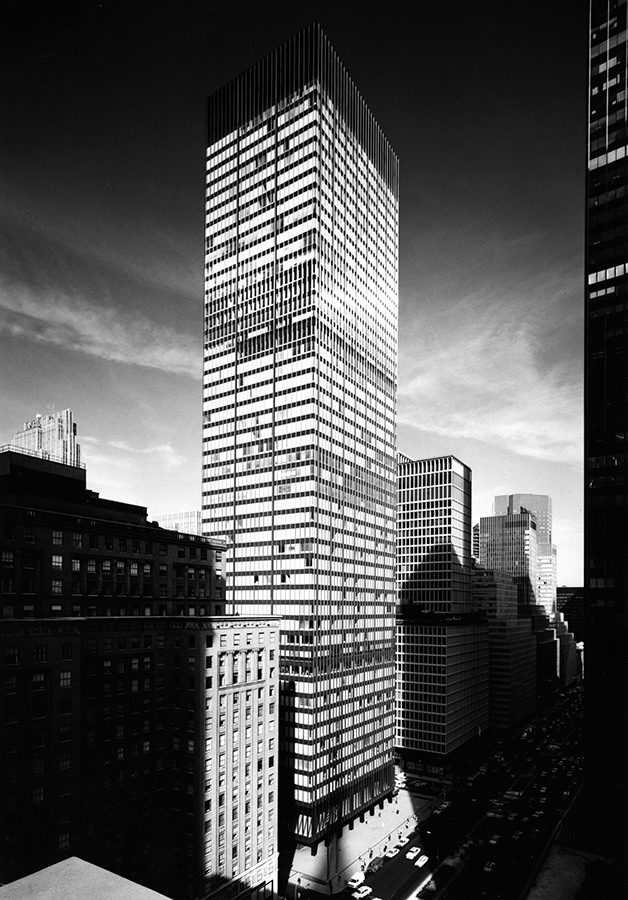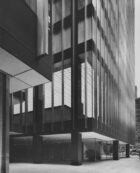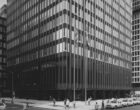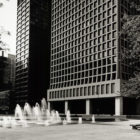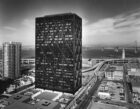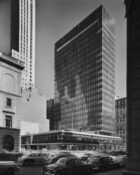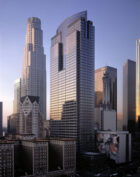Built for the Union Carbide Corporation, this sleek tower, built over railroad tracks leading out of Grand Central Terminal, was unlike its neighbors on Park Avenue when it opened. Not only was it set back in a plaza, but it also stood out for its innovative structural engineering design, which responded to the constraints of the site.
Because of its location, the 52-story tower could have no basement under most of its bulk, and its column-footings had to be poured between active rail tracks. To counteract train vibrations — more than 500 trains passed by each day — all columns were set on vibration pads. Moreover, SOM designed the building so an underground pedestrian passage to Grand Central could be installed.
The tower’s outer skin consisted of approximately 11 acres of glass, stainless steel mullions, and black sandwich panels. Inside, the ceiling system integrated lighting, air-conditioning, and connections for movable partitions — a cutting-edge feature at the time. Adjoining the tower was an annex that contained an employee cafeteria and exhibition hall.
In 1983, SOM renovated the building for a new tenant: the Manufacturers Hanover Corporation. The project presented the unique challenge of retrofitting a classic, modern skyscraper to accommodate new program requirements, energy conservation, and contemporary technology. SOM’s involvement with the building continued into the 1990s, when the firm provided design services for the merger of Chemical Bank with Manufacturers Hanover Trust.
